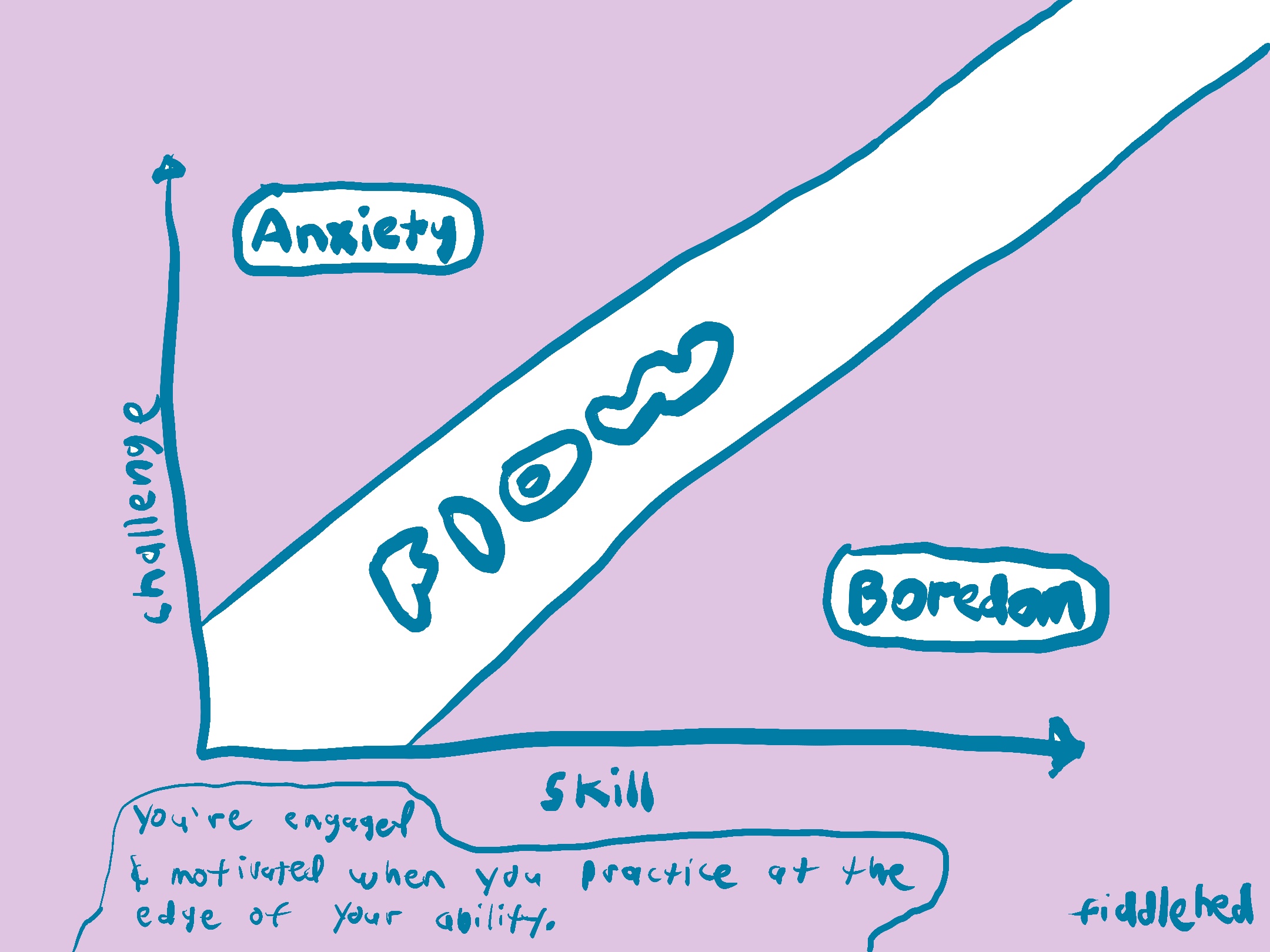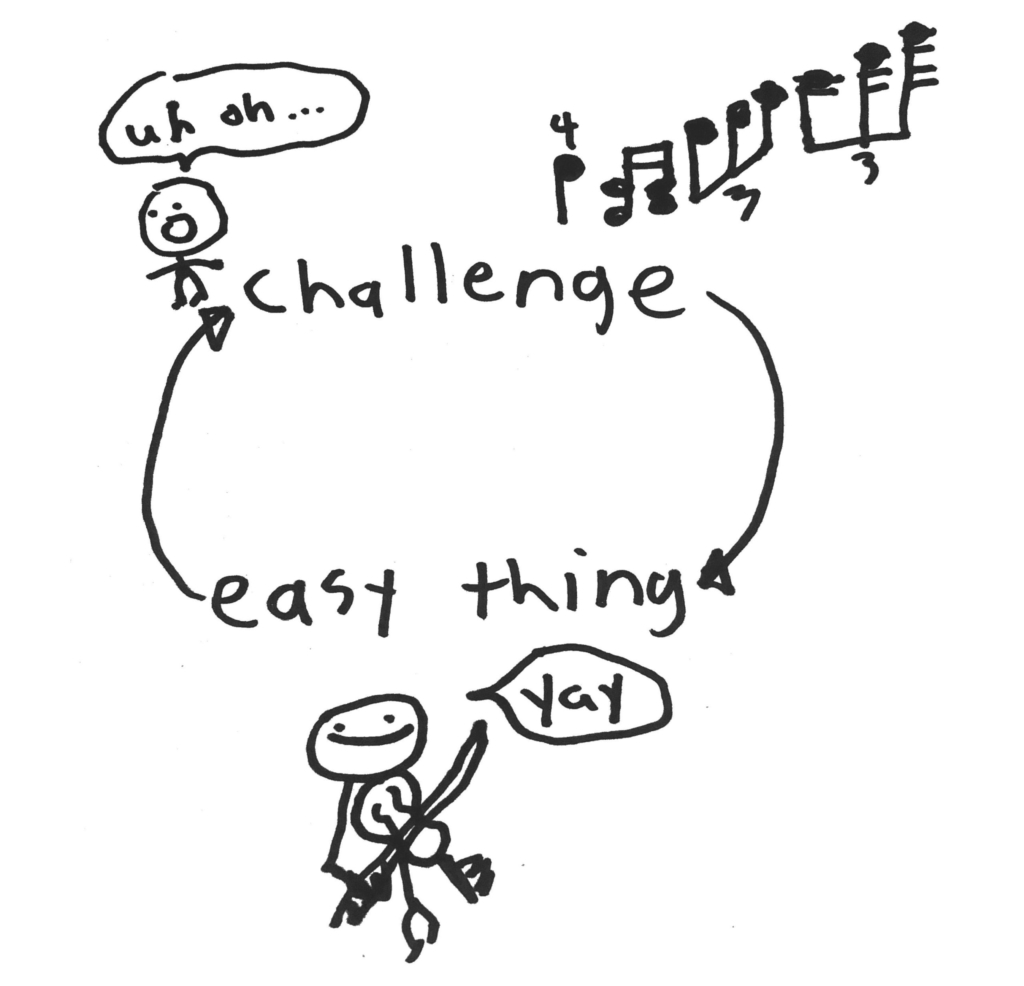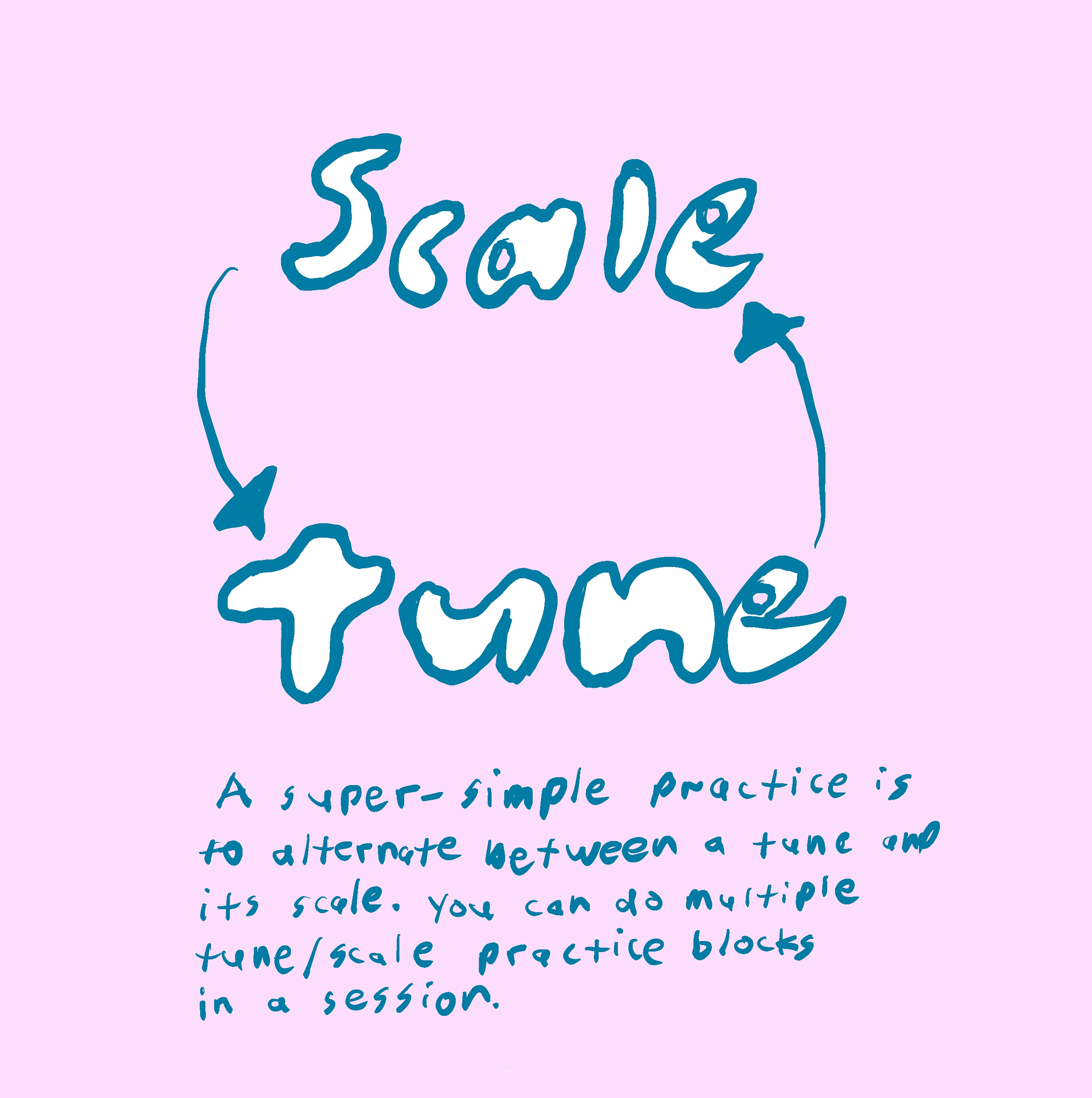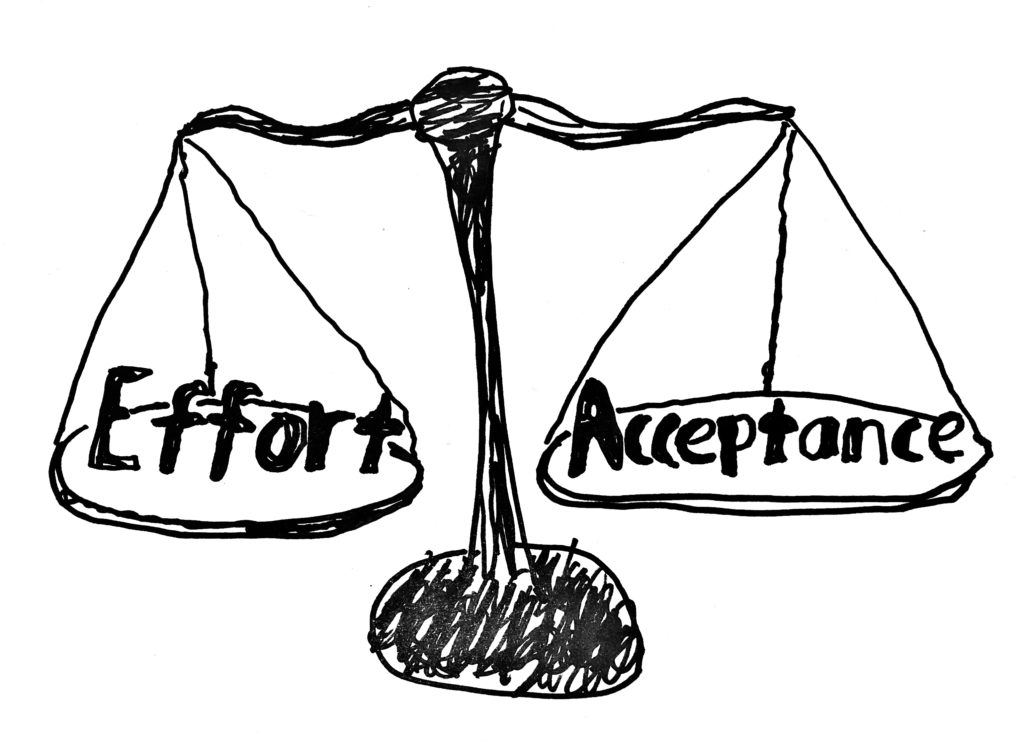If you want to get better at the fiddle, you need to carefully work at the edge of your abilities. Strike a balance between easy and hard.
Try to practice things that are in the “Goldlilocks zone” of difficulty: not too easy and not too hard.
If a task is too easy you get bored. If it’s too hard you get frustrate and want to quit.
Studies show that people are the most motivated when they work at their edge. You enter a flow state which makes the activity extremely satisfying.

I suggest you practice alternating between something easy and hard. The easy thing will give you confidence and center you a bit. The challenging thing will throw you off and make you feel uncertain; and it will also expand your potential. Below are some easy/hard strategies you can try in your daily practice.

Go between the tune and its scale

One simple way to do this is to go between a new challenging tune and it’s scale. Some of these scales (G, D, A) will start to feel like old friends. They will center you, make you feel like you’ve returned home. Then you can venture out into the foreign land of a new tune. Whatever level you’re at, I recommend returning to a scale multiple times througout your practice of a tune, whether that be Pachelbel Canon or Fire On The Mountain or the Game Of Thrones Theme.
For example, the A part to Fire On The Mountain is in A major, so you could loop on the first quarter of the A part for a bit, and then play the A major scale. This process will help your fingers learn what to do and solve technical problems.
Do you not like scales? Maybe you just need a different approach. Take this lesson: How to make scales fun.
Alternate between easy and hard in a loop
Another way to strike this balance between easy and hard, is to take a challenging exercise and simplify it.
Say you are working on using fourth finger (pinky) in Danny Boy. You can alternate between the fourth on A string and the open E string:
A1-4-3-1 / A1-E0-A3-1
Once you start to get the feel of this, do it in a loop. This is a powerful way to practice! Remember: looping is a to move on from thinking about what you should be doing to just playing music. At a certain point you might find that you are able to let go and just let the music flow.
Learn more about this the lesson on Looping Practice.
Play it with two bows
If you play a difficult piece or exercise with two bows, it usually is a little easier. Perhaps because you have more time on each note, because you can start each note on a downbow. In any event, this is usually easy for students. Once you get confident with two bows, try to do the piece with single bows.
But don’t just believe me, try it. Try it yourself on the mini-scale we did earlier:
DL2-2-A1
Play it with single bows, and then with two bows. Which is easier? Did playing with two bows help at all?
Make up you own mini-scales from difficult parts you are currently working on.


Not able to mark this as “complete” for the learning modules, unfortunately; good info, nonetheless.
Great advice, I’m trying some of your technics, going slow.
I’m a terrible person with timing- always have been but this sounds like something I just might be able to pull off. Great suggestion. Thanks.
RE: “Play it with single bows, and then with two bows.”
I have done this on some tunes.
Another thing I do to simplify a new tune I am learning, to get the rhythms right, is to play all notes as eighths (or sixteenths if that’s the shortest value note), and set the metronome to a somewhat slow tempo. So for example, if I the shortest note value in the piece is eighths, then I play two eighth notes when I see a quarter note, three eighth notes when I see a dotted quarter, and so on. That way you know just how long to hold the note. After a few times through you can “tie” together the longer notes, and then you have it. Once this is all worked out then you can add the “swing” to the tune.
That’s a really good idea Kiirmit. I want to try to integrate that into my in-person as well as online lessons. Thanks…